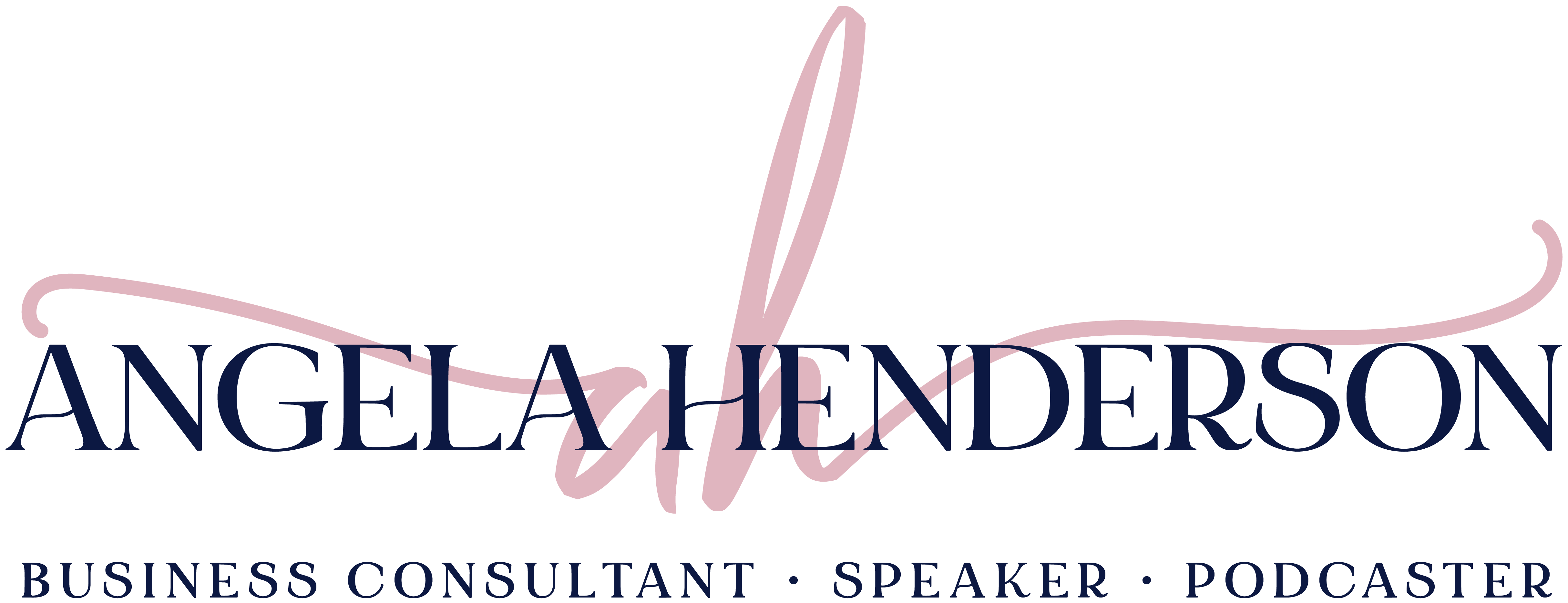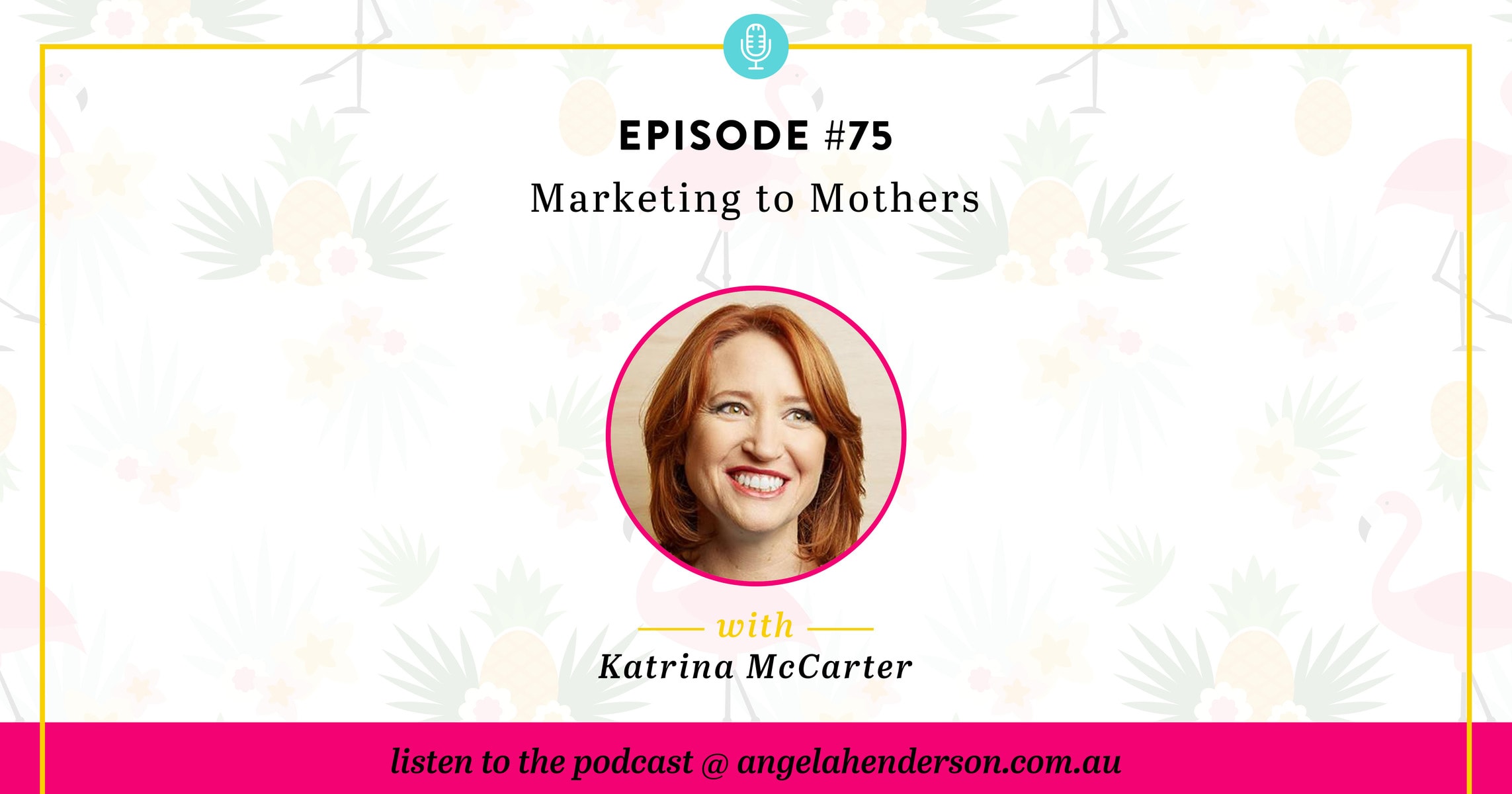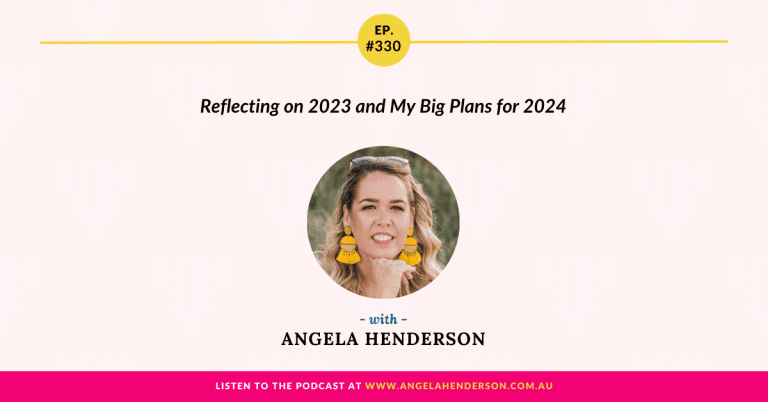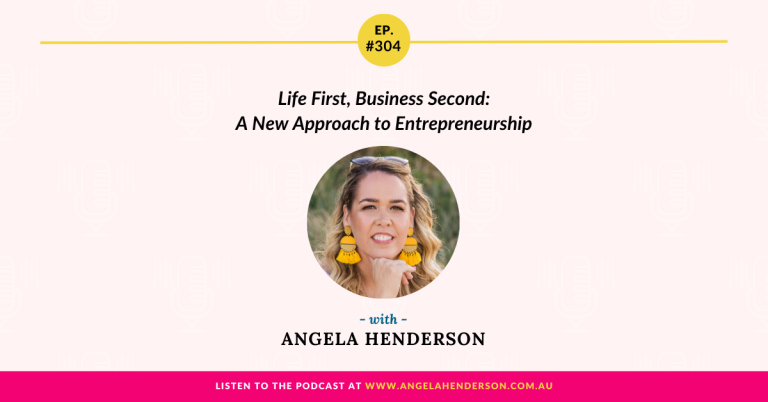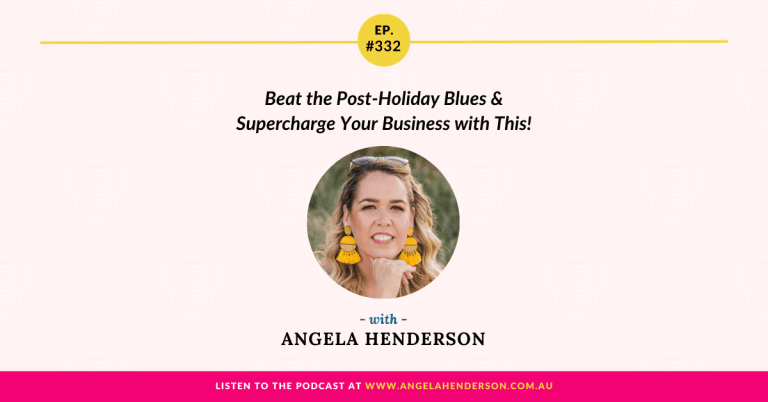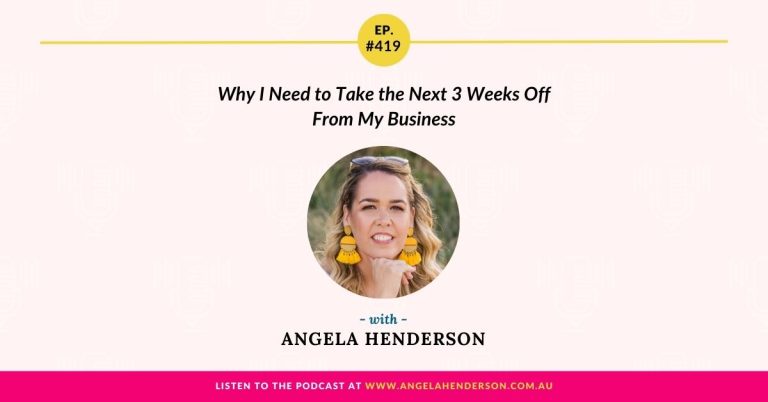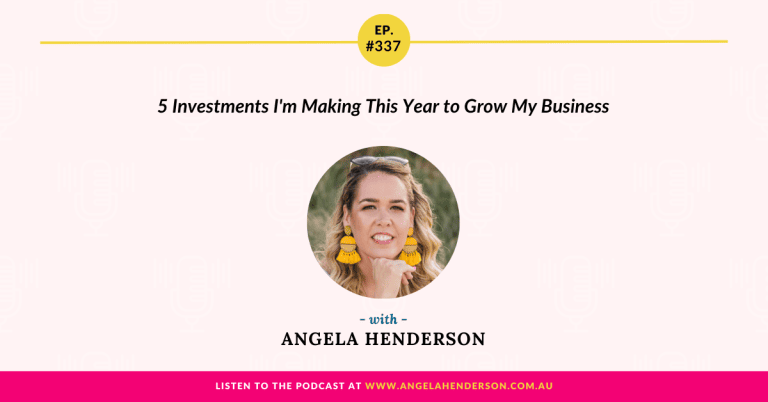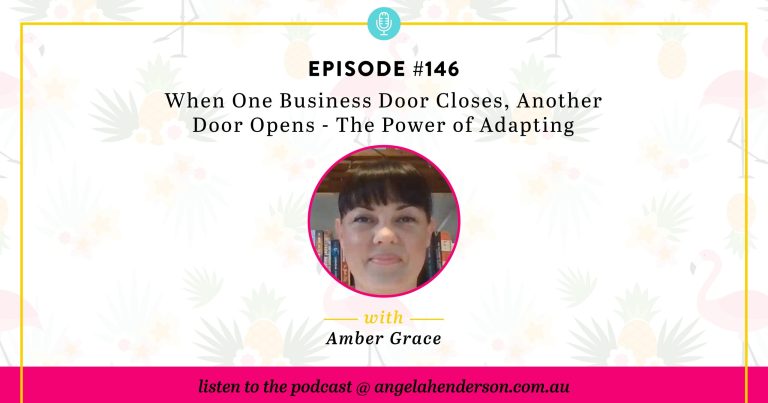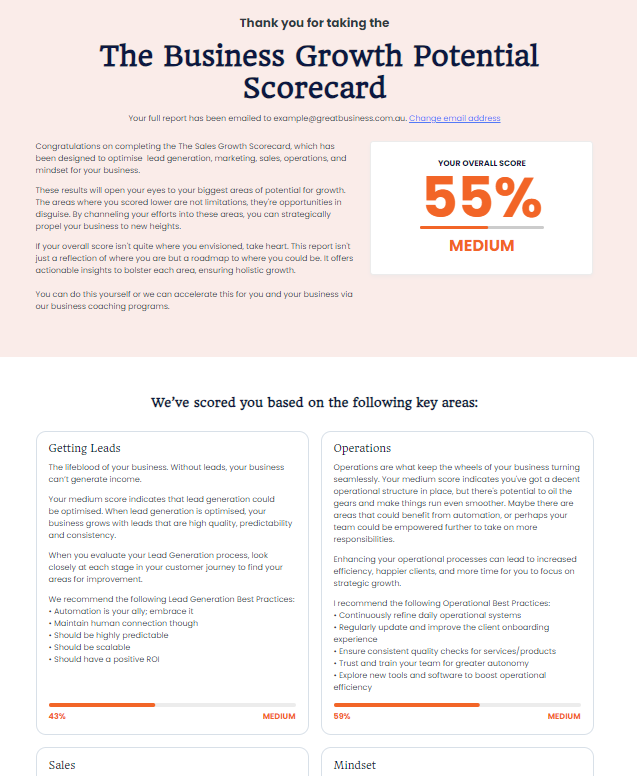Did you know that mothers are responsible for $132 billion spending in Australia every single year? This is why on today’s Business & Life Conversations Podcast episode, I’ve invited Katrina McCarter to talk about one thing that we might be missing out on – marketing to mothers. She is going to share the big mistakes she sees business owners are making, key trends business owners and brands should be aware of, and 5 things business owners can immediately do to improve performance when marketing to moms.
Important Links Mentioned in the Show:
Book: The Mother of All Opportunities by Katrina McCarter
Women in Business Retreat 2020
Australian Business Collaborative Facebook Group
Angela Henderson Active Business Facebook Group
Angela Henderson Facebook Business Page
Prefer to read Marketing to Mothers? Here’s the transcript:
ANGELA:
You’re listening to the Business and Life Conversations Podcast with Angela Henderson, Episode 75.
Hey there, you’re listening to the Business and Life Conversations Podcast. My name is Angela Henderson and on this show, we talk about improving your business, life or both, by having amazing and rich conversations with brilliant guests who will inspire you and who will give you tips and tricks to help you grow both in life and in business.
Well, hey there and welcome back to another awesome episode of the Business and Life Conversations Podcast. I am your host Angela, from Angela Henderson Consulting where I am a Business Consultant helping women in business go from stuck, overwhelmed and working in their business to gaining clarity, strategies and systems in order to allow them to grow 5, 6 and 7-figure businesses.
Now, today’s topic: Marketing to Mothers. This might surprise a few of you, and more importantly, get you thinking about how you might be missing out on a big chunk of customers within your business. I mean, did you know that if moms were an industry, they would be the biggest contributor to the GDP? Global Data Insights 2011 quoted that. Did you also know that moms are responsible for $132 billion in spending in Australia every single year? And then, did you know that 6.2 million moms in Australia that we currently have, and of those, 140,000 women become moms each and every year. These stats people are staggering, staggering and staggering.
So for most of you listening, there will be mothers that buy directly from you or indirectly influencing other people in their communities to buy or not buy from you. You’re not going to want to miss this amazing episode where I will be speaking with Katrina McCarter about what are some of the big mistakes that she sees business owners making when marketing to moms? What are the key trends business owners and brands should be aware of when marketing to moms? And she’s also going to talk a little bit about what are the five things that business owners can do immediately, right now, to improve their performance and attract more mothers to their business. And let’s just say, there’s so much more goodness in this episode that I won’t even get into it right now.
But before we jump into this episode, I just want to let you know that this episode is sponsored by my new on-demand business master class, The Ultimate 4-Step Framework for Creating a Sustainable and Profitable Business. And in my 60-minute jam-packed master class, you will learn my signature four-step framework for creating a sustainable and profitable business without sacrificing time with your kids, without the overwhelm or without wasting any more cash. I also talked about the four big business mistakes that everyone in business makes and why they’re keeping you from growing a sustainable and profitable business.
Now, to sign up for my on-demand master class, you can simply head to bit.ly/masterclasswithangelahenderson. Again, that link is bit.ly/masterclasswithangelahenderson. And I’ll also have that link in the show notes.
Alright. Let’s get started in this amazing episode about Marketing to Mothers. Welcome to the show, Katrina.
KATRINA:
Thank you very much, Angela. I’ve been excited to come on your show.
ANGELA:
Gosh. Well, I’m excited to have you here. I was trying to think before as I do, pretty much with any podcaster, I guess, that I bring on, like, where did we initially meet? And it’s been; I couldn’t…
KATRINA:
I remember.
ANGELA:
Where exactly it was. But it has been ages that you and I have been in this realm together.
KATRINA:
Yes, listen. I think it was actually five years ago. We’ve been speaking online for a while, but I think it was at Pregnancy, Baby and Toddler Expo over in Perth about five years ago that we actually met face to face.
ANGELA:
Actually, I think you might be right because it was the first time I had done the Pregnancy and Baby Expo in Perth. Typically, I stay more on the east coast side of Australia; for those listening, Perth is a city here in Australia; so in case to those who don’t understand geographically what Katrina and I are talking about. So yes, probably Pregnancy Baby Expo, and then we hang out again at Elise’s conference a few years ago at What’s on 4. We continued doing an adventure with your daughter down at the Gold Coast after that, and yes, again, we’ve always continued to maintain contact with mutual friends in a variety of different pockets of our businesses. So now, super excited to have you onboard today, Katrina.
KATRINA:
Thank you.
ANGELA:
So now, I always ask a fun question to the guest because I think it’s important that the audience gets to know you a little bit more than what you do just for business. And it’s a great way to start developing those relationships through the podcast. So my first question to you is I love flowers, alright? And so, I’m curious to know, what is your all-time, go-to favourite flower that you would have in your house every single day if you could?
KATRINA:
Oh, that is such a good question. I can tell you what I won’t have.
ANGELA:
Ok, tell me what you won’t have. Yes.
KATRINA:
I’m not a rose girl. So for me, it’s never roses, but I do, I kind of change with the seasons; I’ve always loved lilies. So lilies have been a really, really big one. But I’ve actually, I’m now living in one of the outer suburbs of Melbourne in Australia and I’m really close to kangaroos; I’ve got a big bush backyard. So I’m actually really now getting into natives. So I really love some of the proteas and things like that. So it’s an Australian native flower.
ANGELA:
Oh, it’s great. And how long have you been located in your new area?
KATRINA:
About 18 months now. I’ve always been part of the hustle and the bustle, Angela. I love the inner city, but we’ve moved out; I’ve got three teenagers, so we wanted to move out and have a little bit more space. So we’re on a nice big block and I’m really enjoying a slower pace of life.
ANGELA:
I can only imagine that just by changing your environment, naturally, everything else will start to change. So even though as much as you love the hustle and the bustle, every single day, I’m assuming you’d slow down a little bit. Would you agree with that or how is that transformation happen for you?
KATRINA:
I’ve done it slowly. So I still love the hustle and bustle, so you’ll often find me in coffee shops. Back in the inner city, I really love, I love getting away and I love going; we’ve got these beautiful wetlands and there are kangaroos about 500 meters from home. So I love going for a walkout amongst all the wildlife and fauna down in my local area. So that’s really nice to slow down.
ANGELA:
It sounds superb. And I do think there’s something to be said about being able to slow down, connect with nature, get outside. I mean, there’s enormous benefits, but yet, so many people don’t do it. So, well done for that.
KATRINA:
Thank you.
ANGELA:
Now, I also like; we know a little bit about your into native flowers, you’ve moved a little bit out of the hustle and bustle. Tell us a little bit more about the history of business; I know, but the listeners don’t; so tell us a little bit about where you were and where you’re currently at.
KATRINA:
Sure. So I started life, I was one of those corporate women. I worked in the FMCG area, which is the grocery industry and used to run big sales teams for some well-known brands. And I used to also run the accounts, so some of the major supermarket accounts and big brands. And then, I had kids and I took a career break. It was really important for me to spend that first kind of five years with my kids; that was something that I wanted to do. And we relocated from Melbourne to Perth, which is the other side of Australia, and that’s originally where I’m from and it’s a lot quieter over there.
And when I was ready to go back to work, there was no actual grocery industry over there. So it was really a process that I needed to reinvent myself and I always have this burning ambition that I wanted to run my own business. That was something that was really, really. At that point, I was 39. I had growing financial commitments with mortgages, etc. but I decided it was now or never. So I spotted a gap in the market and launched an online shopping website for moms and I grew that business until it was a community of 150,000 moms, and then I sold that business in 2016.
But it was whilst I had that business that I really got great insights into mothers and I saw this growing dissatisfaction with the way they were being communicated with brands. And at the same time, I was noticing that brands were really struggling to work out how to effectively communicate with mothers and to convert it into a sale? And that for me, was another gap in the market.
So in 2015, I launched my current business, which is called Marketing to Moms, and that’s a marketing and research consultancy where I specialize in helping businesses and brands sell more effectively to Moms. And I kind of work with businesses of all levels, from start-ups right through the big corporates and have a look at how they’re currently marketing, where their gaps are, where their opportunities are and really help drive a competitive advantage for each business.
ANGELA:
That sounds great. And what a journey you’ve had to go through, like kind of that corporate area there, going into creating your own job, really, and now, coming out with some of that consulting stuff both, like you said, small business owners, corporate business owners, etc. But why, I know you’ve touched upon it a little bit, but I’d like to know a little bit more about why does your business focused only on mothers? So can you kind of go a little bit more in-depth with that for us?
KATRINA:
Yes, absolutely. Look, mothers are responsible for 80% consumer spending. They’re shopping for multiple generations. So I consider them the chief shopper in the household and everyone wants a bit of mom’s attention and she’s inundated with sales messages that she’s getting, trying to get her attention. But getting mom’s attention can actually be quite difficult, she’s often very distracted and I really help brands cut through, I guess, a lot of that noise and to create meaningful relationships with moms.
Having said that, Angela, what we’re saying with younger families is that they’re adopting a more egalitarian approach to parenting. So I’m now finding that I’m starting to advise brands on the growing role of dads and also the growing role of kids and grandmas as well.
ANGELA:
Gosh. That’s super interesting. And why do you think the changes happen?
KATRINA:
Look. I just think that increasingly, we’ve got women returning to the workforce in record numbers. We’re seeing that men and women are entering parenthood on equal terms for the first time, so we’re really seeing dads stepping it up in terms of domestic responsibilities. And where I really see that would still got an issue is that a lot of corporations aren’t encouraging dads to take that parental leave and that time off, and what we see is whilst they’re coming in on equal terms, if moms taking overtime off and dads not taking time off as well, then things start to become unequal again.
So it’s really, we really require a corporate change to happen that really embraces and encourages dad to take that parental leave if they’ve got available in their organisation. That’s when we’ll start to see greater societal change.
ANGELA:
Yes, and I couldn’t agree more. I think again, my husband plays a magnificent role and I wouldn’t be where I am without him and I’m very grateful for that. But like you said, not everyone has that same potential, like we don’t know what the demands are for different families, what their husband’s role are. Like, I was speaking with this beautiful lady just before; her partner is a fly-in, fly-out, right? But I think for those people, like I know brother-like figure, he just had a beautiful baby girl named Lacy over the weekend. And one of those things that I know that again, he does get some parental leaves; so he’s very excited to take it and I mean, he will take it. But that, again, sometimes it can be offered, but again, it’s not necessarily the mailman might take it also.
So I guess, I think culturally, we’ve got change, it’s great, but inside of our own families and society, but also from the corporate structure. Now, many of my listeners out there might be thinking, “I don’t market to moms, Katrina. This podcast might not be relevant to me.” What would you say to those listeners out there?
KATRINA:
I love this question. Okay, this is how I’d respond. I’d say, here in Australia, we’ve got 6.2 million mothers. Every year, another 140,000 women are becoming mothers for the first time and collectively, these women are spending $132 billion every year. So to actually put that into some perspective for you, if moms were an industry, that actually be our largest contributor to GDP in this country. So they’re incredibly, financially powerful.
But this is something that I’d really say that I think might resonate with some of your listeners is that moms are also incredibly influential. Research shows us that when a woman becomes a mother, she is 8 times more likely to talk about brands than previously; 8 times. So even if you are not selling directly to mothers, she is influencing your purchasing because she’s got an opinion about brands and industry and segments and she’s sharing that far and wide. So I do think that moms can have a strong influence in many different industries and segments even if they’re not making that purchase.
ANGELA:
And I like the data because I’m very much driven; I’m driven by data. So the fact that you’re able to give those listeners the statistics, if you’re not listening or you were sitting on the fence going, “I don’t really market to moms,” I think that data that Katrina has just given us is quite substantial and it substantiates the fact that you do you have, indirectly, even if not directly, those moms who are potentially leading to your overall success or not success.
I know an example I can use is the other day, I had this lady who sent me a message and I was like, “Oh, I want to buy your last ticket for your Women in Business Retreat.” And I was like, “Okay, no problem,” and I just said, “Ah, just out of curiosity,” because it was someone who I had no; total cold client, and I said, “Can I ask who referred you?” She’s like, “A friend of mine referred me to you. She doesn’t have a business but she’s seen you along the traps, per se.” Right?
And again, so though I know it’s not a direct relation to the marketing to moms is that people are always still talking about your brand and your business to other people at all the times. And if that market happens to be, which Katrina just said, so much of that is moms, then you need to be mindful about how you’re marketing.
Which I guess kind of leads me to my next question, Katrina, is I guess you could even say, one of the mistakes that listeners could be making is that they’re thinking they’re not marketing to moms, but what are some of the other big mistakes you see business owners making when marketing to moms then?
KATRINA:
Yes. Look, I’ve been consulting to an array of brands across really diverse industries from pool chemicals through to optometry and healthcare and automotive since probably 2015, and I consistently see the same three mistakes they made over and over again.
The first one that I’d see is that businesses are targeting too broadly and that they’re treating moms like they’re all the same. Now, where I’m saying real results is when an organization niches. I am, just like Angela said earlier, I’m very much a data-driven marketer and I will do a lot of research and I start working with a new client to clearly identify who their most profitable segments of the mom market is and then build a strategy directly around that segment.
Now, I know a lot of people are concerned, “If I narrow down my audience to be a small segment, and I just missing off a whole lot of people that I could be reaching?” And I’d say, “What I see is that when a business niches, they connect more deeply and they convert more strongly.” So they tend to increase their sales quite significantly. So the first mistake is, just reconfirming, is that they target too broadly.
The second thing that I see is that they just don’t understand moms deeply enough. And as a result, they’re missing out on some amazing opportunities, which could be new products or services that moms want. You need to invest in regular research. I would be saying at least every three years. I think it’s one of the most important foundations in a business. I see plenty of businesses waste a hell of a lot of marketing investment because they really don’t know who they’re targeting and they don’t understand their mothers deeply enough.
And the third issue, Angela, that I’d see all the time is a real credibility problem. A lot of brands have got credibility issues and that’s really just a result of the fact that they’re targeting too broadly and they don’t understand their moms deeply enough. Moms discounting them, she’s saying, “You don’t understand me. I’m not going to waste my time.” And we see this characterized by really poor relationships, our lack of loyalty, and with it, a real threat of declining sales.
So that’s kind of my perspective with the big mistakes. We’ve actually done research from moms’ perspective to find out what she thinks the mistakes are that brands make. She identified nine. I just love to reel off a couple of them to you.
ANGELA:
Yes, absolutely. Because I couldn’t agree more in regards to; we’ll just talk a little bit about the niching side of things and I think we did an episode on this on Episode 62 for those that are interested, it was called To Niche or Not to Niche? And there, it’s like, if you were right now having a heart attack on the ground, you’re not going to call up your general doctor and be like, who normally, typically prescribes you medication for your ears, your throat may be, do some blood tests; you’re calling up the damn cardiologist who’s a specialist, to go, “Help me now. Like something’s severely wrong.” If you want to live, that’s what you’re doing.
And I know it’s a bit drastic, but that’s the reality and I think niching is crucial. I could not agree with you more, Katrina, around having the ability to really know who you’re speaking to because when you’re able to niche, you become known as that specialist. When you’re able to niche, everything else is formulated so easily, your content marketing is so much easier, your copy for your Facebook ads, your funnels, your lead magnets; everything else becomes so cohesive. Your market just knows exactly who you are, what you stand for and how you can help them.
KATRINA:
Absolutely. There’s really strong clarity and I see with that brings incredible sales results. So I’ve seen some amazing leaps in sales with clients that have really honed in on their niche. But for moms’ perspective, she’s got some different ideas in terms of what brands are doing wrong. And her key one, her number one thing is stereotyping. This is a major issue for her. She’s saying the family structure has changed dramatically, but yet, we’re still being served up these images of 1950s housewives, and they’re really, really pushing back against it. She’s wanting to see life depicted more realistically.
Her second big beef is she says that brands are failing to build a relationship with her first, they’re just jumping into a sale. They haven’t got to know her, they haven’t earned her respect that she demands, and they haven’t had the opportunity to get to know them. She’s looking for a values alignment, so she really says that brands just aren’t are taking the time to build the relationship first.
One of the things that they were really vocal about is that they feel that they’re being treated like they’re stupid. That once they become a mother, that they lose their brain and they’re really angry about this. They want to hear, if you’ve got a technical product or service, they want to hear that technical information; it’s important to them, they can digest it. And don’t skip over or dumb your message down.
And I guess, one of the other ones that she pointed out was actually offering no value. I’ve seen many businesses play it out on a price game and I just see that this really, really makes life very, very difficult. I’m a big believer in clearly understanding what your key points of difference are and really amplifying those because the more that you can amplify those differences, the less that it’s a price game. And moms value so many other things besides price when they’re evaluating your business. So they’re kind of some of the ones from moms’ perspective in terms of mistakes they make.
ANGELA:
And was that from the research that you had done, that you had undertaken with the moms that this, I guess, the information has been pulled from? Because I know you took an enormous amount of research; you interviewed hundreds of women around this. So it’s great to know that again, this isn’t just something that Katrina has just made up. Like, she spent a copious amount of hours and time surveying mothers and finding out what they like, what they didn’t like, what ticked, what ticked them off. And so, it’s really important that when you listen to this episode, you start formulating and think, “Oh, am I doing that?”
And an example, too, is this client came to me, and she was talking about her Facebook ads and she said, “My Facebook ads just aren’t working and I don’t know why. And typically, it’s the copy where we go wrong with that.” So I said, “Let me read your copy.” And I said, “Actually your copy, your copywriter is in a brilliant job on this. He put on the pain points. He have actually shown value,” which is one of the things that the moms are saying that we don’t. So at this instance, this particular business had done it, but what she hadn’t done was the images she was using, so her ideal client was a 38-year old, I believe, off the top of my head, mother of two small kids, disposable income, etc. etc. But the images they were using, Katrina, was that of like a literally 23-year old.
KATRINA:
Yes. Uh-oh.
ANGELA:
It was like, you’re talking about moms who, like you said, not all moms don’t dress up and do whatever, but they’re tired, right? We don’t necessarily have time to do our hair the way we used to or fit in these beautiful clothes the way we used to. Now, again, this isn’t a generalization, so there might be moms that can still do this, our hat goes off to you. But in this image though was a girl at the beach in this beautiful bikini, and again, looked beautiful, but it wasn’t relaying the message or hitting that target market.
KATRINA:
Yeah.
ANGELA:
So there was a disconnect. We changed the images, Facebook ads went through the roof and the rest was history. So again, it is super important to be mindful about all these components with marketing.
KATRINA:
Yes, absolutely. And I think you touched on a really interesting point there, Angela. We undertake about three research studies a year, and yes, again, I’m very, very much data-driven and what we found is that Australian mothers are not aspirational as on the whole. And so, I’m not at all surprised to hear that a highly aspirational shot of a young woman in a bikini did not resonate with the actual audience.
ANGELA:
Exactly. And they have everything else, but what they were trying to sell in their message, that was all well; it was just that little image. We just need to change the image to reflect those moms and we were good to go. Now, what are the key trends business owners and brands should be aware of currently?
KATRINA:
Sure. Look, there’s a lot. I’m actually probably going to cover off about four or five with you.
ANGELA:
Sure.
KATRINA:
Because moms are actually changing quite rapidly and we’re seeing this in between our research projects. So we did a really big study back in 2016 of more than 1,800 moms. We have more recently done a follow-up to that and that was more of a smaller sample that was more millennial mothers that was about 700 moms. But what we saw in that study was some significant shifts in attitudes and behaviours. And one of the things we’ve seen is the emergence of what I call Tech First Mothers.
Now, I’ve written about this group quite extensively in my new book that’s just been released called The Mother of All Opportunities. But a tech-first mother is largely a millennial mother and she’s looking for a tech-first solution to her problem. So I will give you an example of that Angela would be, some of your listeners might be familiar with the Peanut App. This was an app that was built by a woman by the name of Michelle Kennedy in the UK and she’s used dating technology to apply that to moms meeting each other app.
So basically, it’s an introductory service for you to connect with other like-minded moms in your area and it’s to overcome the feeling of isolation when you become a new mother. And that is a great example of a tech-first solution to one of mom’s problems. We’re seeing a lot more of this kind of things coming out; ParentTV, Video-on-Demand, From Parenting Experts would be another example.
So that’s one thing that millennial mothers are very fast adopters of new technology; we’re seeing massive uptake of these smart speakers and that’s really changing the way moms are discovering brands. So voice search is going to be incredibly important in the future over the coming decade.
One of the other trends I’d like to say is the increasing role of grandma. Okay, so grandma is increasingly been called on to do some of the childcare in families where both parents have gone back to work. Childcare is hard to secure; it’s expensive, people are increasingly asking their own parents to care for their children and that’s increasingly falling on grandma’s shoulders.
And grandmas are starting to get pretty physically exhausted that what we’re also finding is that grandma has now starting to get involved in some everyday purchasing within the household. So it’s really complicating the path to purchase. So grandmas are becoming an increasing stakeholder and I’m always telling my clients, they need to start preparing their grandma strategy over the coming decade because their influence is only going to increase.
One of the other trends we’ve seen, it’s just the power of testimonials. In both our 2016 and our 2019 research, testimonials are the number one reason mom buys. They’re actually more influential than a mom-to-mom recommendation. Mom does not need to know who’s written the testimonial, she just needs to know that there’s someone just like them.
And to give you an example of just how well testimonials can perform, in 2016, after I launched my first book, someone wrote a review in a closed Facebook group for moms in business. Now, within 48 hours, my book went number one on Booktopia’s Business Bestseller List in Australia where it remained on and off and in the top 10 for the next four weeks. So I can definitely tell you that testimonials are highly, highly influential.
ANGELA:
I do like the one about grandma because I think again, not only do we need to prepare for the tech first moms but in some ways, we got to, you could say, tech-first for grandmas, right? Because this might not be the tech side of things, it’s just that overall grandma strategy that needs to happen, because again, if they’re going to be the ones potentially that are doing the grocery shopping because that’s part of their day-to-day responsibilities, or they are the ones that needed to take, I don’t know, Johnny or Suzy to ballet or to wherever, they’re going to be the ones going back, going, “Oh, you should buy this. You’re going to need this in order for ballet performance, you should do this.”
And the moms are just going to take their word because again, they don’t have the headspace to really sit there and go, “Should I? Shouldn’t I? Mom said it’s good. I’ll just buy it.” So I really like that you brought that to the attention of people about having that grandma strategy because I think it’s going to be imperative for businesses’ growth. If not now, but in the recent future.
KATRINA:
Yes. Absolutely. And I guess two other trends that I’d really like to highlight is we’re seeing a real rise in conscious purchasing. We’re seeing that families are starting and mothers are really starting to embrace sustainability as well as its move towards minimalism. It was really kicked off with the Marie Kondo book, the art of tidying up, and as a result of this, what we’re seeing is it’s not uncommon for women to take a full year of not buying a new piece of clothing because they want to reuse what they’ve got, they want to reinvent what they’ve got or they want to rent or they want to borrow because they just don’t want to consume so much. So that’s important. They’re going for quality over quantity.
And the other thing that we’re seeing that I guess presents a real obstacle for a lot of business owners and marketers is the rise of Netflix. The video streaming has meant that it’s really hard to reach mom with ads, with advertising. So what we’re seeing is businesses are starting to rely on more digital methods to reach her.
ANGELA:
And I think again, the Netflix scenario is super important and I was speaking at someone, a digital marketer this past weekend, and one of the things that we’re talking about is so many people are so obsessed about their sales funnels and Facebook sales funnels, in particular. And I, too, agree; we’ve been doing some Facebook ads ourselves and so, a lot of my clients were finding is that Facebook isn’t doing what it used to do five, even two years ago, alright?
And so many people are so obsessed about this funnel; this Facebook ads funnel that they’re forgetting about so many other funnels that equally are important. So again, what is your opt-in funnel, what is your potential, your Facebook group funnel; what is like all these different funnels? So I think it’s super important that not only that you’ve brought this up from that point of view, but just in general, that ads aren’t working the way they used to.
So what are businesses collectively doing to make sure that again, they’ve got the launching game; so do you have SEO in place, what are those other funnels? And I know we could do a whole other episode just on funnels, but it is important to realize that you shouldn’t be putting all of your eggs into the Facebook ads funnel because things are starting to change quite drastically on that for sure.
KATRINA:
Yes. And I’m seeing that through my market research, so I do a lot of projects where I may deem to find the most profitable segment on the mom market for a different brand and we’re seeing how people are finding out about those businesses, it’s actually changing. And I’m seeing a real rise also in Google ads, so we’re seeing that really growing in popularity and effectiveness over the past 12 months.
ANGELA:
And it’s funny you say that because we’re about to double down on Google ads. We’re actually doing some split testing so we’re just on; this is our third month going in at time of recording with Facebook ads, and we’re going to then look at that data and then we’re going to pretty much shut down all the Facebook ads, and keep a few little things running, and then, we’re double down on Google ads. And we actually then want to look at both of that data and cross-compare, because even though your cost per lead on Google ads might be slightly more, the fact is that those people are searching with intent to buy when they go to Google. They’ve got a problem, they want it to be solved.
And story I’ve used many times here on the podcast is that when my brother passed away last year on Mother’s Day unexpectedly, it wasn’t a matter; I didn’t go to Facebook trying to book my plane ticket to get back for his funeral and get back to my family. My credit card was out. I had a problem. My problem was I needed a plane ticket, I need it reasonably cheap and I need to get there the fastest way I could. We know with Google, you convert better on Google by typically a standard as about 30% better.
And so, again, if you don’t look at those Google ads as potentially a strategy, they could be hurting your overall business because like I said, you might pay a little bit more on lead, but your conversion and the leg time is going to be much less than having to warm someone who’s been watching in the underwear watching Netflix and just happened to scroll through one of your ads and clicked on it. So it is, I think it’s super important being able to cross-test those two platforms.
KATRINA:
Yes and I agree. Every business is different, so testing is so important. But over the last 12 months across an array of businesses, I’ve seen some really good uptake on Google ads, so it’s certainly something that has got my attention.
ANGELA:
100%. So yes, that’s great to hear because my Google ads specialist will also be, because we’re having this debate with a Facebook guru out there at the moment. So we’re collecting all the data we can to put for our end result. So very cool.
Now listen, we hear a lot about moms also in social media, I guess, together. What do business owners do you feel need to understand about moms in social media and how can this benefit in them grow their sales?
KATRINA:
Yes, great question. Look, I’m going to revert back to the data again. Our research in 2016 and again, in 2019, found that Australian moms, their number one favourite platform was Facebook. Now, it didn’t matter what age they were, millennial moms were telling us their favourite social media platform was Facebook and I know we hear that it should be Instagram. What we did see between 2016 and 2019 was the gap between Facebook and Instagram is narrowing, however, Facebook is still very much a key leader in terms of moms’ preference on social media. And again, that’s in the millennial bracket as well and I know that that surprises people. So that’s one thing that I’d like to put for.
I would also like to say LinkedIn is something, is a place that if you are in the beta base phase, it’s a great social media platform for you to consider. More so, in terms of thought leadership and sharing content of value as opposed to running ads that I’m really, really interested in LinkedIn. Although I had seen a ship in reached over the course of this year, it is more restrictive than it has been a year ago.
But one thing that I think is super underrated here in Australia is YouTube. And YouTube pre-rolls to me are a great opportunity for many brands to be considering. When I talk about a pre-roll, I’m talking about that short 6-second ad that you often have to sit through before you’d see the video content that you’ve gone to YouTube to view. But I have seen some incredibly effective campaigns that I’ve run for YouTube pre-rolls and I think that that’s a really untapped opportunity both in advertising but also in content.
Moms are really making use of YouTube, particularly anything that’s how-to or educational. We’re seeing a massive trend amongst mothers wanting to improve both their personal and professional development and they’re turning to YouTube videos to do that.
ANGELA:
And I know at Social Media Marketing World this year in San Diego, that was the same thing that Mike Stelzner talked about was the importance of YouTube. YouTube and Instagram stories were kind of like their main two things this year that they were really, really pushing in the way that people consume video on Facebook versus how they consume a video on YouTube; very different. And also, again, people are forgetting that YouTube is a search engine function also, right?
KATRINA:
Yes.
ANGELA:
So it’s important that again, if you’re going to Google, hence, again, they both are together and you’re Googling things and if you got something on YouTube that is also going to start to populate for you. Again, I do agree with you, Katrina, what you’re talking about, like these how-to videos; they’re one of the most popular ways that Google gets, certain topics get searched for over on YouTube through Google and that’s what’s populating. So I couldn’t agree more, YouTube is definitely under touched and there’s a lot of people talk about, “I’m too late on the YouTube train.” Listen, if you can join, “You’re too late on the Facebook train,” you can more than definitely join the YouTube train and they’re going to be quite successful over there.
KATRINA:
Absolutely.
ANGELA:
From a strategic point of view. Now, I know there are things that business owners can do to improve their performance and attract, I guess, more mothers to their business especially around the data that you talked about today. Are there any type of tips or tricks that you can of lead us with that, Katrina?
KATRINA:
Yes, absolutely. The first thing I would say is develop a strong brand story. Moms want to hear your passion for what it is that you do. They need to feel that emotional connection between from your brand to them. They need to understand that your brand shares the same values that they do. So your brand story is super important and it’s of no surprise to me that your About Us page is likely to be your most highly trafficked page besides your landing page. So develop a strong brand story and share it far and wide. Use it in your media interviews, use it on social media, the place you’re using, and it’s powerful and influential.
The second thing that I would say is that your differences make you special. And this is something that I tell my kids all the time; I get so excited when someone’s different because life would be so beige otherwise. It’s important to amplify your key differences through your marketing communications. I actually say that they should become your core content pillars that you talked about. The more that you can differentiate your brand, the less price becomes an issue in any kind of purchase decision-making process. So they are two things.
The third thing I’d say is use more videos; mom find it much easier to digest. The fourth thing I would say is use testimonials; it’s the number one reason moms buy. I don’t let any of my clients send out any marketing communications without a testimonial attached to it. Moms want to see that third-party proof. They want to minimize their risk and want to ensure that they’re making the right decision.
And the final thing that I would say is that it’s so important, rather than do a sales post or a piece of sales copy, engage in story-selling. And what I mean by that is sell to mom in stories. Share with her someone else’s experience of working with you and tell us that story because that’s going to be far more engaging and far more emotionally connecting and mom won’t feel like she’s being sold to. So I’ve seen incredible results when we’ve done tests between a straight sales post and then doing a story-sell instead. And we’ve seen increases of up to 400 times the amount of web traffic it drove over when compared to a straight sales post. So story-selling is super effective.
ANGELA:
And story-selling I think is also equally is important because they way Facebook and algorithm also apply, is that if you’re able to use; a couple of those things you’ve talked about is use more video and you drive them over to your website through your story and use it in the link in the video versus posting the link on Facebook, again, you’re giving Facebook what they want. They want people to stay on that community and on that platform. And so again, if you’re able to incorporate what Katrina said is use more videos and then draw them to that story engagement, again, you’re bound for a profitable winner for sure.
KATRINA:
Yes, absolutely.
ANGELA:
Now, our final question before we wrap up with this juicy conversation today is what do you know now that you wish you knew when you first started?
KATRINA:
Oh, great question. Certainly, I wish I used marketing partnerships even earlier than I did. So one of the things I’ve become very well-known for is working collaboratively. I love working alongside and collaborating with other business owners so that we all grow our businesses together; that gives me a great sense of satisfaction. That’s something that I definitely did in my first business. In fact, that’s how I grew my first business. But I would have liked to have even used it from day dot, so be bold enough to go out and seek marketing partnerships from the first day of being in business. Then, the other thing that I would say is don’t get print media.
ANGELA:
Yes.
KATRINA:
I felt like I may as well throw some money outside, out the window as I was driving the car.
ANGELA:
Yes. Print media is an interesting one. I mean, it continues to be there, people are continuing to get sucked into tens of thousands of dollars and there’s very little ROI. So always; print media are not; always ask yourself what is the ROI by engaging in this advertising and marketing commitment?
KATRINA:
Yes.
ANGELA:
And sometimes, ROI could be long-term, like, I’m heading to The Maldives at time of recording for my own mastermind and some people; I might not see the immediate return on investment, but it’s a long term investment that I’m after and I’m okay with that.
KATRINA:
Sure.
ANGELA:
What is that ROI? But print media, I’ve yet, hand on heart, in my almost decade of being in business, seen any level of return on investment with print media.
KATRINA:
Oh, I will say, Angela, I had gone out and made that bold statement but there are some exceptions. I would say the Coles and Woolworths Magazine, those free magazines are doing amazing things in terms of driving sales for brands. But all I’m saying is be super selective if you are going to look at print media.
ANGELA:
100%. But Coles and Woolworths, those brands that are advertising within those platforms, we’re looking at, I mean, their budget is going to be so much different than the average small business owner that either you’re starting; or even who’s been on business for a few years and actually has some dollars behind them to invest. And those, that brand placement, too, is even if you look at though; for those who are listening that aren’t on Australia, Woolworths and Coles are two major supermarkets here in Australia. They also just did this campaign where they give out this like little, what would you call them? Like, it’s a miniature food item, I guess you could say. So it could be a butter, but it’s a little stick of butter and kids play with it in their kitchen etc.
Anyways, there’s lots of controversy about it but we won’t get into that. But from the brand point of view is also those brands are not only showing up on those magazines but they’re showing up on these other little miniatures that all these hundreds of thousands of kids are now taking home to their houses. But again, their budget, Katrina, would be crazy compared…
KATRINA:
It is. It’s very, very, very significant. As a small business owner, I think that there are more effective ways to market your business than look at print media.
ANGELA:
Totally. I agree with you 100%. Now, for those listeners out there that would like to get to know you more, and I know you’ve got the book coming up, can you tell us a little bit more about that Katrina?
KATRINA:
Yes. So the Mother of All Opportunities was launched in October; so just launched. And that is looking at all the incredible opportunities that exist within the mom market. So I’ve looked at 8 sub-segments of the mom market that are being highly underserved. I’ve also had a look at geographic locations; so if there are brands that are looking for growth over the next 10 years, that want to perhaps look internationally, I’ve had a look at five different locations around the world where I see some real opportunities in the mom markets there.
And then, I’ve had a look at four industries that I think are not doing a good job at servicing moms and they might present some opportunities for people that might be considering entering business; that could give you some things.
And then, what I’ve looked at is the future of marketing to moms. I’ve made 8 big predictions about where I think marketing to moms is going and things that you need to be planning for now in your business to ensure that you’ve got continued growth and success.
ANGELA:
Gosh. Well, listen, Katrina, thank you so much for your wonderful insight today around marketing, specifically to mothers, whether or not you’re here in Australia or internationally, the wisdom you’ve given us today will definitely get a few people’s heads turning and eyes winking, I think.
And before we sign off, please remember that my team and I will also be putting together the whole transcription for this episode at angelahenderson.com.au. And of course, I cover all sorts of related business and life topics inside my Facebook community, The Australian Business Collaborative. So feel free to join us over there.
But in the meantime, have a brilliant day no matter where you are in the world and I look forward to you joining me again next week for another amazing episode of the Business and Life Conversations Podcast. Thanks again, Katrina, for everything. I really appreciate that.
KATRINA:
Great to be able to speak to you and your listeners. Thank you, Angela.
ANGELA:
Thanks for listening to the Business and Life Conversations Podcast with Angela Henderson, Marketing to Mothers. www.angelahenderson.com.au
